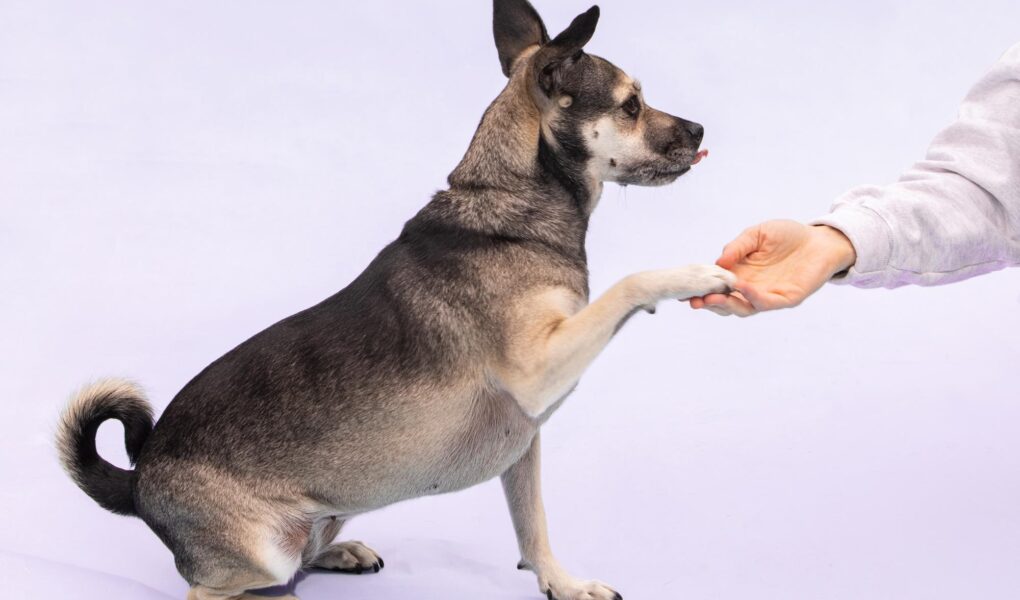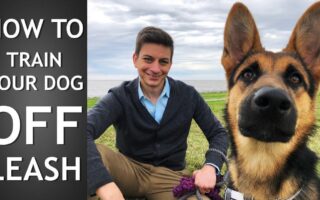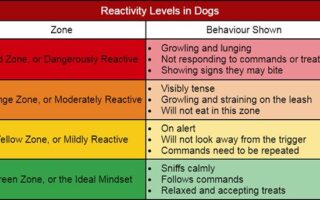Teaching a dog to stay is more than just a command; it’s a pathway to building trust, understanding, and communication between you and your furry friend. Picture this: a world where your four-legged companion remains comfortably by your side, even in the midst of distractions, allowing for peaceful walks, enjoyable visits, and stress-free interactions. The ability to stay not only enhances your dog’s safety but also fosters an environment of respect and obedience. In this article, we will explore effective techniques and strategies to teach your dog this essential command, ensuring a harmonious partnership that enriches both your lives. Whether you’re a seasoned dog owner or just starting your journey, mastering the “stay” command is a valuable skill that will serve you well for years to come. Let’s dive into the art of teaching your dog to stay!
Table of Contents
- Understanding the Importance of the Stay Command in Canine Training
- Step-by-Step Guide to Teaching Your Dog to Stay Effectively
- Common Mistakes to Avoid When Training Your Dog to Stay
- Enhancing Your Dogs Stay Command with Advanced Techniques and Tips
- Q&A
- Future Outlook
Understanding the Importance of the Stay Command in Canine Training
The Stay command is a cornerstone of effective canine training, serving multiple purposes that extend beyond simple obedience. It instills a sense of discipline and helps to establish a strong handler-dog relationship. By mastering this command, your dog learns to control impulses, which is crucial in various situations. For instance:
- Safety: Keeping your dog stationary can prevent dangerous situations, such as running into traffic or approaching aggressive animals.
- Impulse Control: Teaching Stay encourages patience and composure, beneficial traits that translate into better behavior in different environments.
- Foundation for Other Commands: A solid grasp of the Stay command lays the groundwork for learning more complex commands and tricks.
Proper training in the Stay command also enhances your dog’s socialization skills. Dogs that can remain calm and composed in ambiguous situations are less likely to become anxious or aggressive. This is particularly important in public spaces or when entertaining guests. A well-taught Stay command can make public outings enjoyable and less stressful. Consider the following examples to understand its benefits more clearly:
| Scenario | Benefits of Stay |
|---|---|
| Walking in Busy Areas | Your dog remains at your side, avoiding potential accidents. |
| Visitors at Home | Your dog stays calm, making interactions more pleasant and controlled. |
| Vet Visits | Your dog will be more relaxed, allowing for easier examinations. |
Step-by-Step Guide to Teaching Your Dog to Stay Effectively
To start teaching your dog to stay, choose a distraction-free environment where both of you can focus. Begin by having your pup sit in front of you. Use a leash initially, if necessary, to prevent them from wandering off. You can then show a treat to get their attention. Once they are focused on you, give the command ”stay” while firmly but gently pressing your palm towards their nose. This non-verbal cue will help reinforce the verbal command. As they stay in position, take a step back, maintaining eye contact. If they move, calmly guide them back to the original spot and repeat the command.
Next, it’s essential to gradually increase the distance and duration. Start with just a few seconds before rewarding your dog with the treat and lots of praise for staying put. Here’s a simple table to follow for your practice sessions:
| Session Duration | Distance from Dog | Reward Type |
|---|---|---|
| 5 seconds | 1 foot | Treat + Praise |
| 10 seconds | 3 feet | Praise + Petting |
| 15 seconds | 5 feet | Treat + Playtime |
As your dog improves, you can introduce more challenges, such as distractions like toys or other animals in the environment. Always be patient and consistent in your training sessions, ensuring you celebrate every small victory. This reinforcement will create positive associations so that your dog looks forward to practicing their “stay” command.
Common Mistakes to Avoid When Training Your Dog to Stay
Training your dog to stay can be an incredibly rewarding experience, but it’s important to sidestep common pitfalls that can hinder progress. One major mistake is being inconsistent with commands. Dogs thrive on routine, and switching up your cues can confuse them. Always use the same command, tone, and hand signals to ensure clarity. Another frequent error is setting unrealistic expectations. Dogs require patience and repetition; if you demand too much too soon, it can lead to frustration for both you and your pet.
In addition, improper timing in rewards can also derail training efforts. If you reward your dog after they’ve already moved, they may not associate the treat with the desired action. Instead, aim to reinforce good behavior immediately while they are within the stay position. It’s also crucial to avoid negative reinforcement. Yelling or punishing your dog for breaking the stay command only instills fear and can lead to behavioral issues. Use positive reinforcement methods that celebrate their success to create a happier and more engaged learner.
Enhancing Your Dogs Stay Command with Advanced Techniques and Tips
To take your dog’s stay command to the next level, incorporating advanced techniques can significantly enhance their training experience. Begin by using positive reinforcement to reward your dog for maintaining their position. This could involve treats, praise, or playtime after successfully holding the stay for a set duration. Gradually increase the distance between you and your dog as they improve, and introduce distractions, such as other pets or people, to challenge their focus. Understanding your dog’s threshold is crucial, so adjust the distractions to meet their comfort level.
Moreover, exploring duration games can help solidify the stay command. Engage your dog with activities that require them to remain in one spot while you move away, such as the following strategies:
- Start by standing close to your dog, then slowly extend the distance.
- Use a timer to measure how long your dog can stay, gradually increasing the time.
- Create a Stay Board, where your dog can practice staying while you place objects at varying distances.
Additionally, consider utilizing layered commands to keep training fresh and engaging. For example, mix up stay with commands such as “wait” or “settle” to foster a deeper understanding. This skill variety not only builds discipline but also enhances the bond you share with your dog. A proactive approach will encourage them to remain focused and engaged, ensuring success in mastering this essential command.
Q&A
Q&A: Teaching Your Dog to Stay
Q1: Why is it important to teach my dog to stay?
A: Teaching your dog to stay is a fundamental command that enhances safety and control. It can prevent your dog from running into danger, such as busy streets, and helps in managing their behavior in various situations, like greeting guests or during outdoor activities.
Q2: At what age can I start teaching my dog to stay?
A: You can begin teaching the stay command as soon as your puppy is around 8 weeks old! Puppies have a remarkable ability to learn at a young age, but even older dogs can grasp this command with patience and consistency.
Q3: What are the basic steps to teach my dog to stay?
A: Start by getting your dog into a “sit” position. Use a clear and calm voice to say “stay,” then take a small step back. If your dog stays put, reward them with praise or a treat. If they move, gently guide them back to the original spot and try again. Gradually increase the distance and duration of the stay.
Q4: How long should I practice the stay command each day?
A: Short, consistent training sessions are most effective. Aim for 5 to 10 minutes a couple of times a day. This keeps your dog engaged and prevents them from becoming bored or frustrated.
Q5: What if my dog doesn’t seem to understand the stay command?
A: Every dog learns at their own pace. If your dog struggles, consider going back a step. Ensure that they are comfortable with the “sit” command first. Using higher-value treats or toys as rewards can also increase motivation. Practice in a distraction-free environment before gradually introducing more challenges.
Q6: Are there any common mistakes to avoid when teaching the stay command?
A: Absolutely! One of the biggest mistakes is giving the command too often. Consistency is key; once you say “stay,” wait before repeating. Also, avoid punishing your dog for breaking the stay; instead, guide them back and encourage them positively.
Q7: Should I use a release word when I’m done?
A: Yes! Using a release word, like “okay” or “free,” helps your dog understand when it’s time to break the stay command. This adds clarity to the training and helps prevent confusion.
Q8: How can I generalize the stay command to different environments?
A: Once your dog has mastered the stay command at home, try practicing in different locations—such as parks or busy streets. Start with low-distraction environments and gradually introduce new challenges. This helps your dog learn to stay focused, no matter where they are.
Q9: How can I make training fun for my dog?
A: Incorporate play into your training! Use toys as rewards and keep the atmosphere light-hearted. You can also turn the training into a game, such as hide-and-seek, where your dog has to stay while you hide and then find you when they’re released.
Q10: When can I expect to see results?
A: With regular training sessions and positive reinforcement, many dogs begin to grasp the stay command within a few days or weeks. However, like all learning processes, patience and consistency are vital. Celebrate small victories, and your dog will get the hang of it in no time!
Future Outlook
As we wrap up our exploration of teaching your dog to stay, it’s important to remember that patience and consistency are your best allies in this journey. Every dog learns at their own pace, and the bond you build through training will only strengthen your relationship. The “stay” command is more than just a trick; it’s a foundation for safety and good behavior.
By investing time in practice, using positive reinforcement, and celebrating small victories, you empower your furry friend to be a reliable companion. So, whether you’re teaching a feisty puppy or a seasoned canine, know that each session brings you closer to achieving that coveted mastery of “stay.”
Now, with a clearer understanding and the right strategies, it’s time to roll up your sleeves and embark on this rewarding adventure together. Happy training, and may your dog’s “stay” turn into a delightful promise of togetherness!



